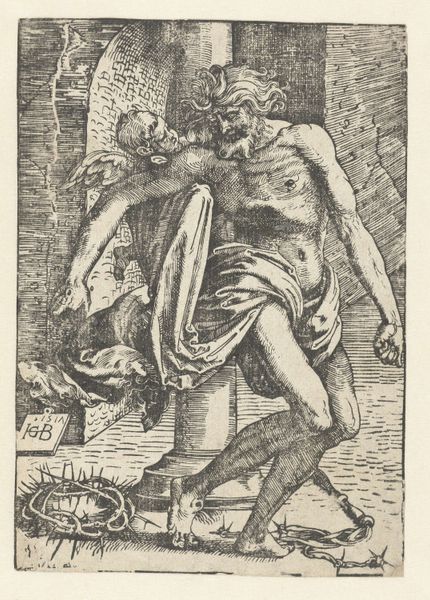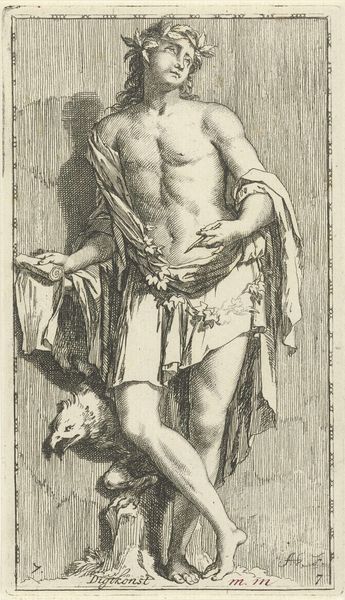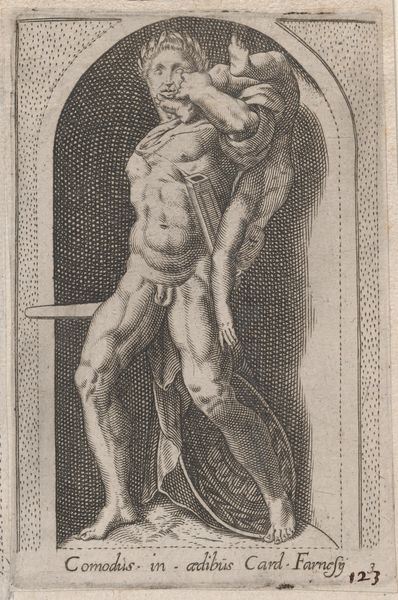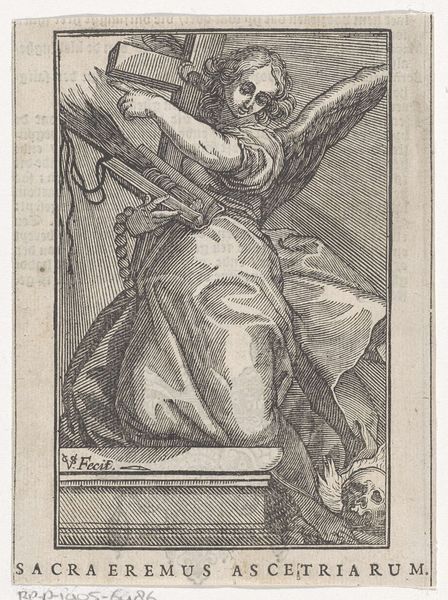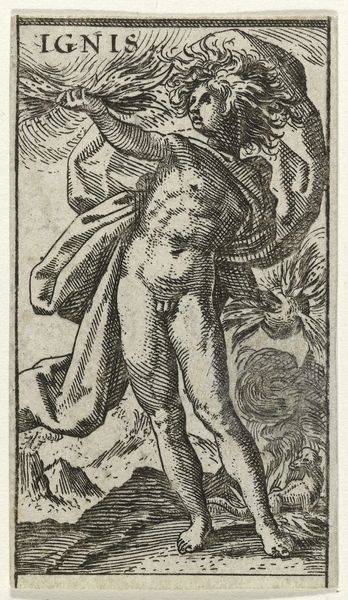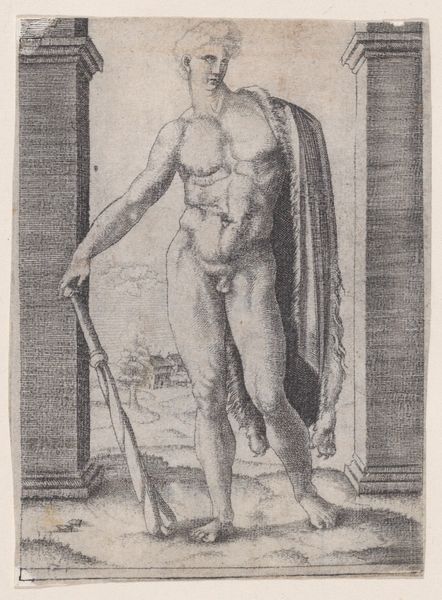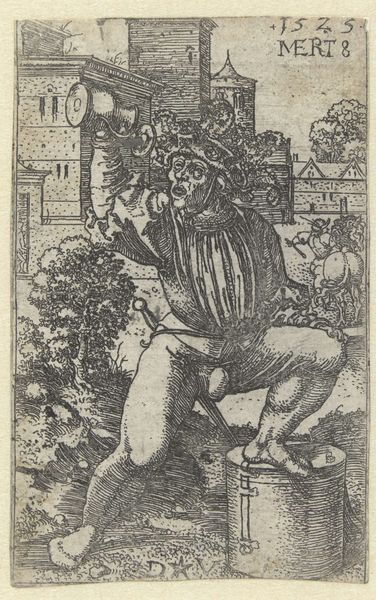
print, etching
#
baroque
# print
#
etching
#
old engraving style
#
figuration
#
history-painting
#
nude
Dimensions: height 123 mm, width 81 mm
Copyright: Rijks Museum: Open Domain
This print, "Christus aan de geselpaal", or "Christ at the whipping post," was made by Cornelis Schut. The technique here is etching, a printmaking process done with acid. Look closely, and you can see how the artist created areas of tone using fine lines. Schut would have applied a waxy ground to a copper plate, drawn his composition with a sharp needle, and then bathed the plate in acid. The longer the acid bit into the metal, the deeper the lines, and the darker they would print. In a way, etching is the opposite of carving. Instead of taking material away, the artist allows chemistry to do the work, a kind of delegation. The image has a powerful message of the body in pain, yet depends on a painstaking process. Hopefully, considering the labor involved gives you a deeper appreciation for the final print, and helps you see the human effort involved.
Comments
No comments
Be the first to comment and join the conversation on the ultimate creative platform.
